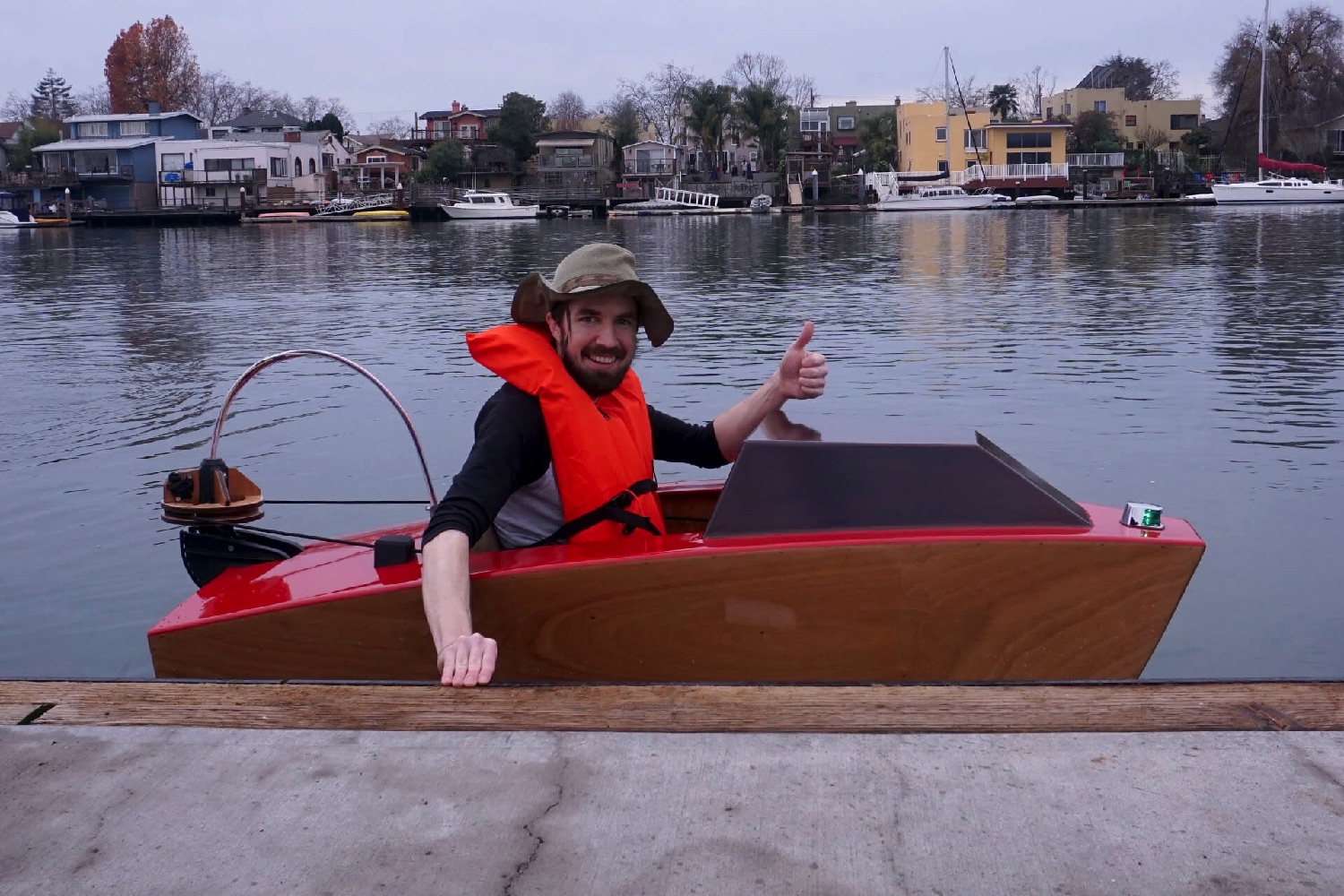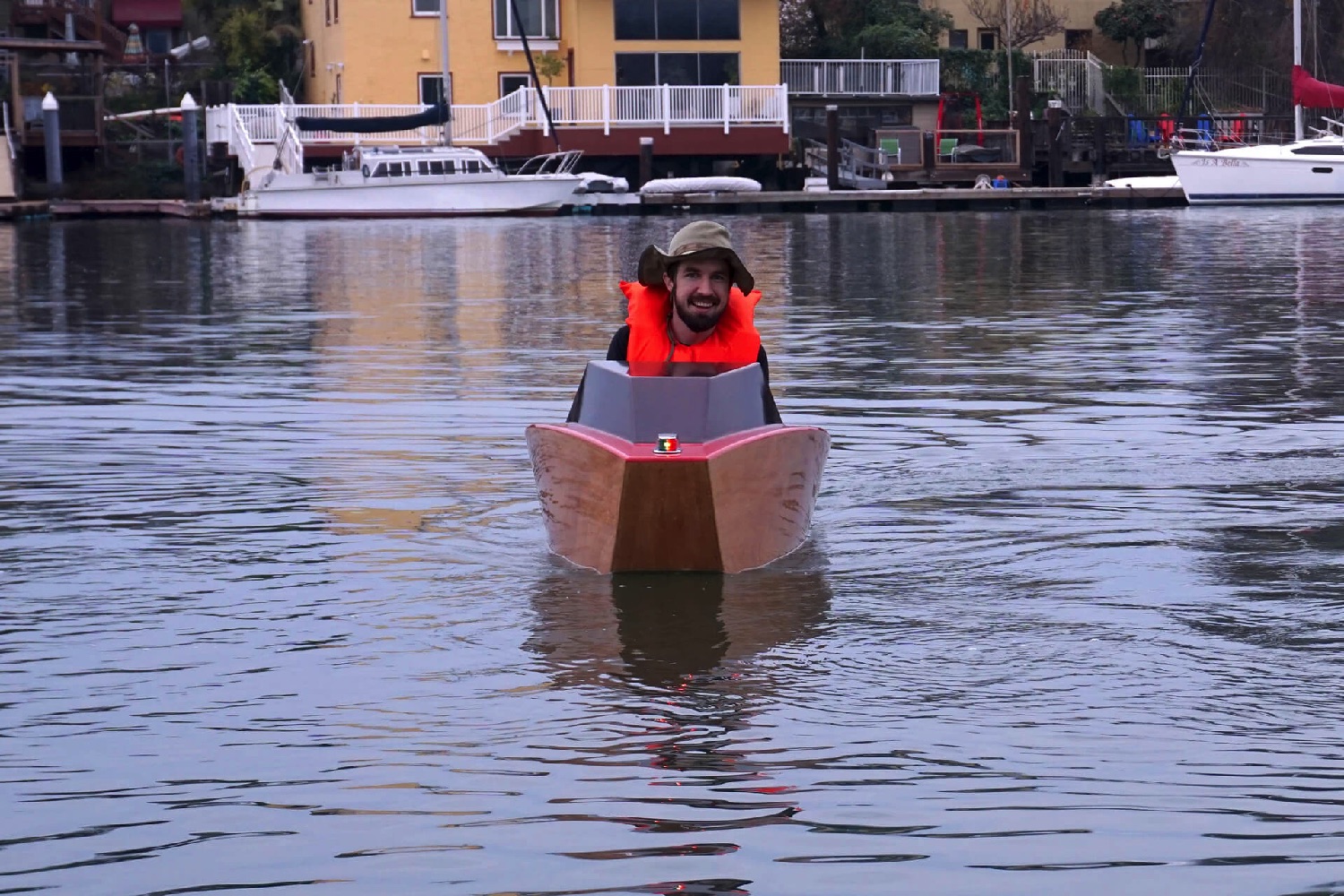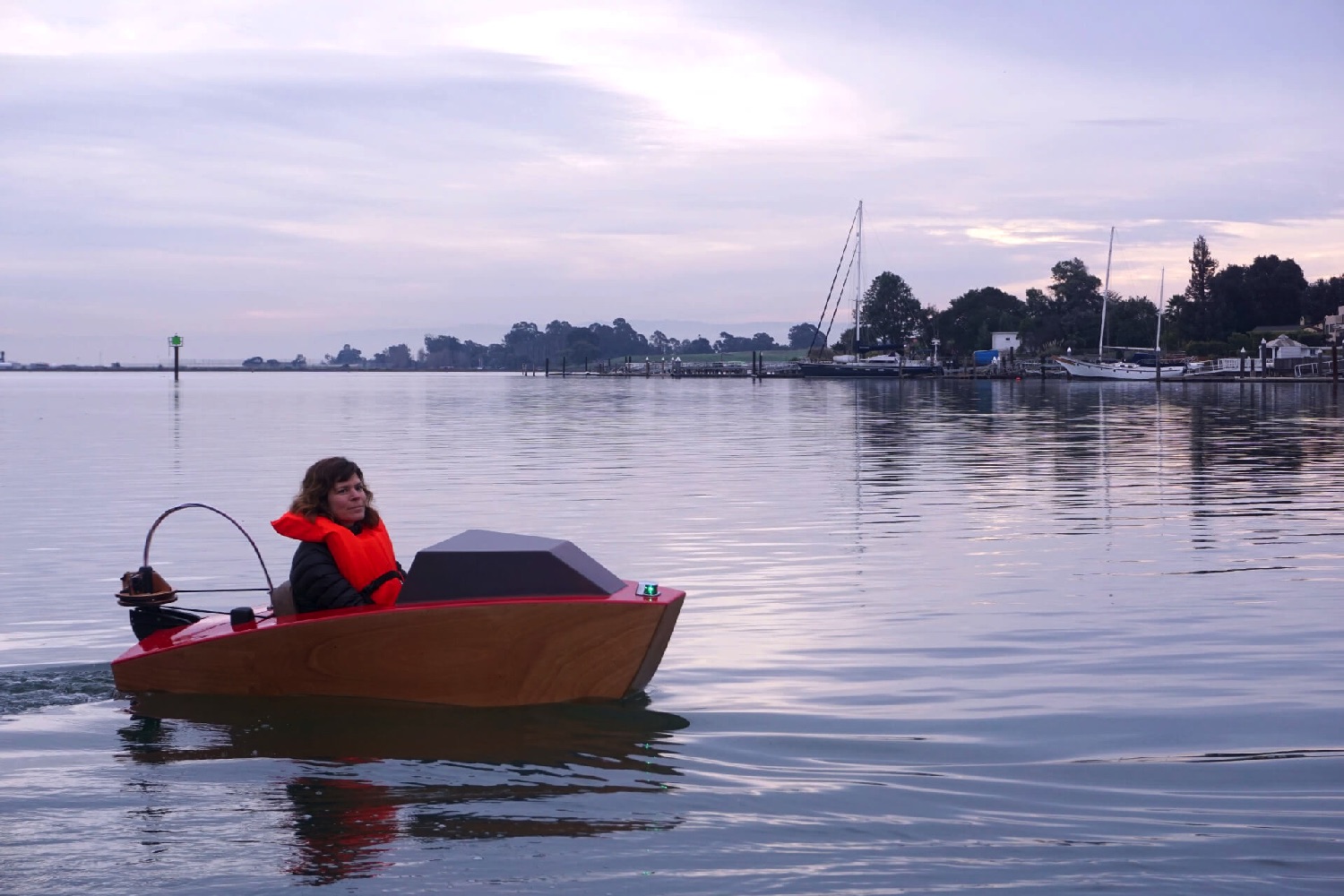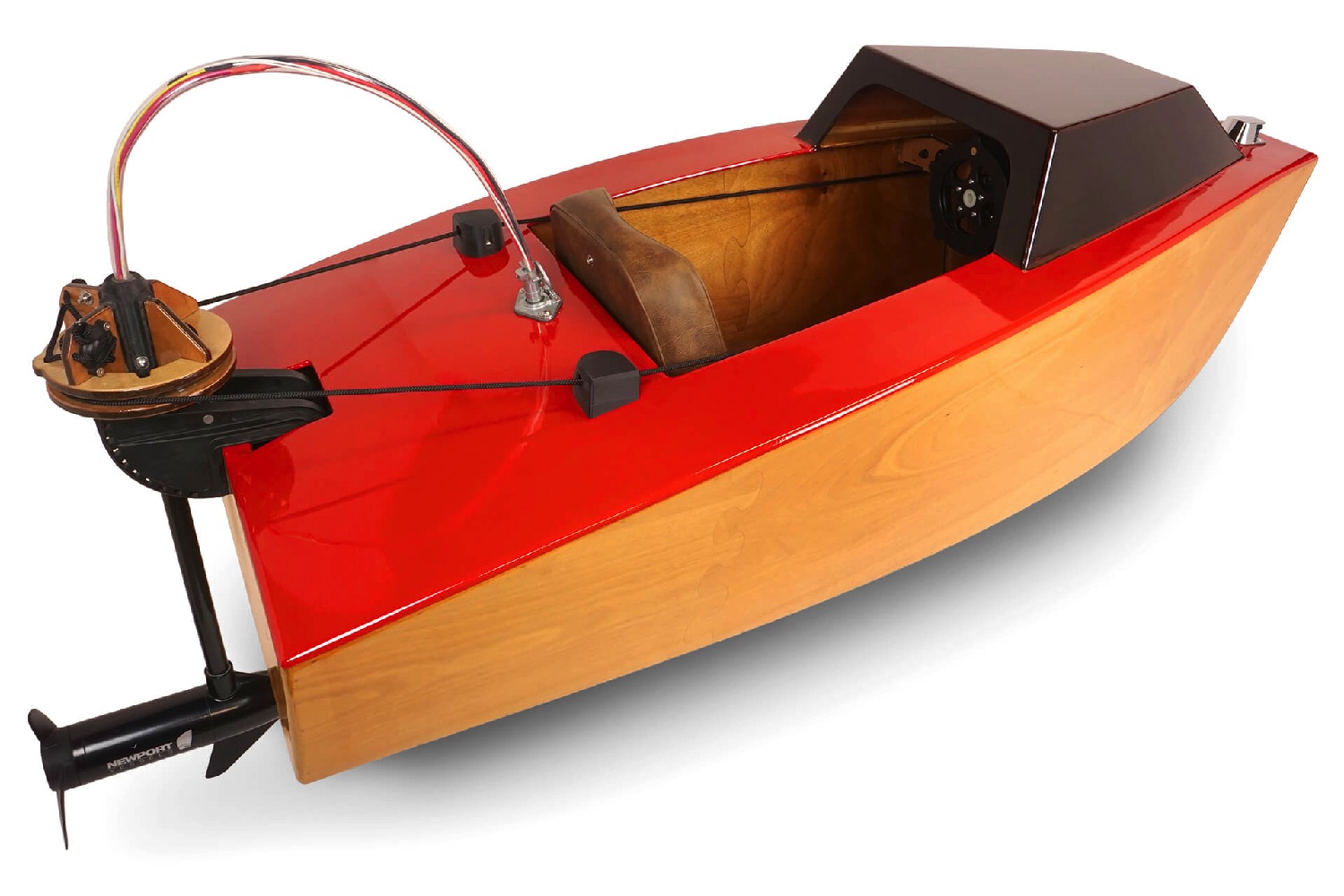“Mini boats are like fancy kayaks, but with way more dock appeal,” Tulberg told Digital Trends. “They are generally slow and 100 percent electric, built for cruising and showing off. I imagine the first mini boats stemmed from the concept of doing more with less.”
Tulberg’s boat is primarily made using three sheets of plywood and stands out from the rest of the mini boat pack in a few key ways. For starters, it’s only 6 feet in length, which makes it far more compact than some of the other options on the market, which are at least a couple feet longer. (He assures us that it’s still stable and comfortable to sit in, however.) It’s also created with a laser cutter, which is unusual for a kit boat, since they are typically made using CNC routers. Finally, it is incredibly easy to construct with what Tulberg describes as a “stitch-and-glue” technique.
The boat’s power comes from a 12-volt sealed lead acid battery, which is reportedly enough to transport a single occupant of less than 6 feet, 2 inches, and 200 pounds at a speed of 3.5 knots. Add to that the fact that you can carry it in the back of your car, and you’ve got a pint-sized James Bond-esque vehicle that will make you the envy of other folks at your nearest lake/beach/large body of water.
“I offer kits on a made-to-order basis, and I also offer plans [in the form of] cut profiles for anyone who is interested in cutting their own, either with conventional power-tools or with a CNC laser or router,” Tulberg continued. Kits cost $950, although you need to shell out around $500-$1,000 more to get various off-the-shelf components to complete it.
If you’re wondering about how much work is involved with the built process, you can check out the entire process online at Instructables. Happy yachting!
Editors' Recommendations
- The OnePlus Watch Harry Potter Edition is here but you can’t get it in the U.S.
- Mars helicopter can’t fly until it gets a software update, NASA says
- Unplugging for 24 hours is a luxury that most people can’t afford
- What does f/0.98 look like? The Nikon Noct is a monstrous lens you can’t afford
- Can’t afford the Nintendo Switch Lite? You can now put it on layaway at GameStop







